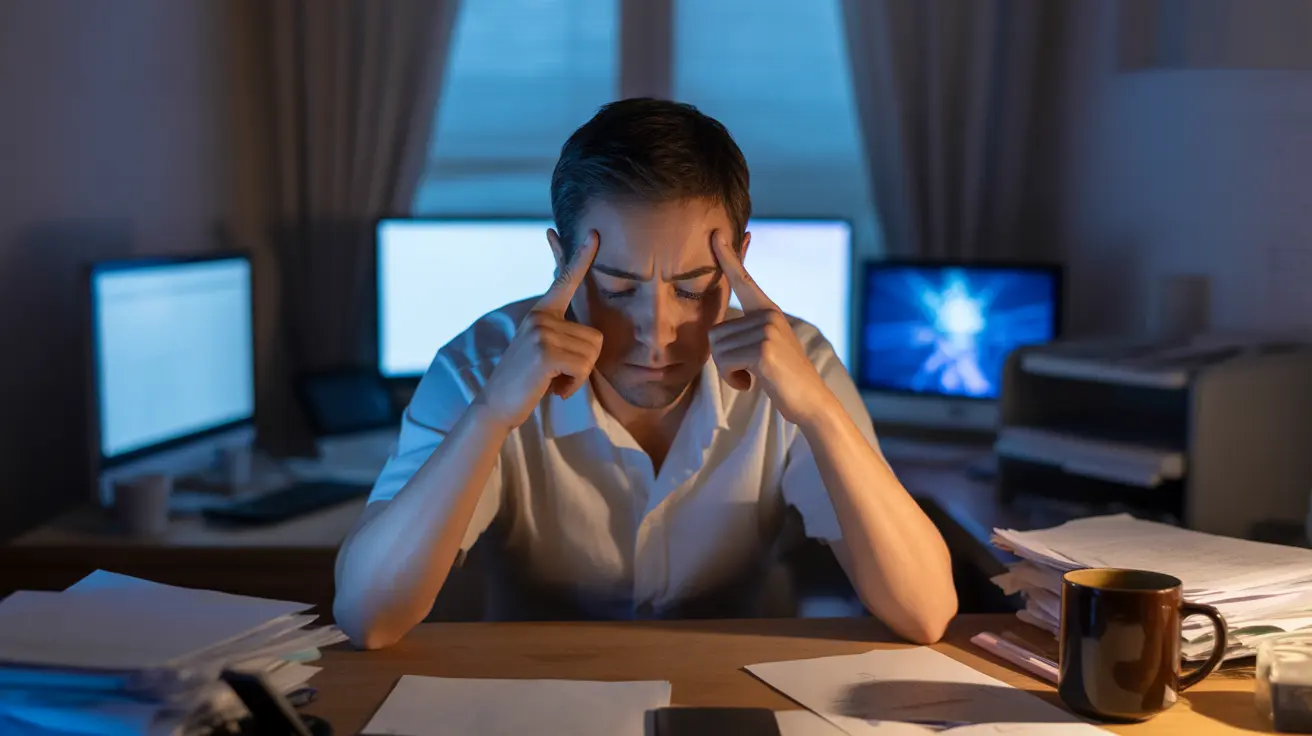In our digital age, exposure to blue light from screens and LED lighting has become nearly unavoidable. Many people report experiencing headaches after prolonged screen time, leading to growing concerns about whether blue light can trigger headaches and migraines. This comprehensive guide explores the relationship between blue light exposure and headache symptoms, backed by current scientific understanding.
Understanding Blue Light and Its Effects
Blue light is a high-energy visible light that's emitted by digital screens, LED lighting, and the sun. While natural blue light exposure during daylight hours helps regulate our circadian rhythm and boost alertness, excessive artificial blue light exposure, particularly from digital devices, may contribute to various health concerns, including headaches.
The Connection Between Blue Light and Headaches
Research suggests that blue light can trigger or worsen headaches through several mechanisms:
- Digital eye strain
- Disrupted sleep patterns
- Increased light sensitivity
- Retinal stress
- Muscle tension from poor posture during device use
These factors often work in combination, potentially leading to more severe or frequent headaches in susceptible individuals.
Common Symptoms of Blue Light-Related Headaches
When blue light contributes to headaches, people typically experience:
- Frontal head pain
- Eye strain and fatigue
- Pressure behind the eyes
- Blurred vision
- Neck and shoulder tension
- Increased sensitivity to light
Individual Sensitivity to Blue Light
Not everyone experiences the same level of discomfort from blue light exposure. Several factors can influence individual sensitivity:
- Pre-existing migraine conditions
- Visual processing sensitivities
- Amount of daily screen time
- Overall eye health
- Age and general health status
Prevention and Management Strategies
Screen Modifications
Simple adjustments to your digital devices can help reduce blue light exposure:
- Activate built-in blue light filters
- Adjust screen brightness
- Increase text size
- Use dark mode when available
- Maintain proper screen distance
Environmental Changes
Creating a eye-friendly environment can significantly reduce headache risk:
- Ensure proper room lighting
- Position screens to minimize glare
- Take regular breaks using the 20-20-20 rule
- Maintain good posture
- Consider using LED bulbs designed to emit less blue light
Frequently Asked Questions
Can blue light from screens and lights actually cause headaches or migraines?
Yes, blue light exposure can trigger headaches or migraines in sensitive individuals. The high-energy wavelengths can cause eye strain, muscle tension, and trigger photophobic responses that lead to headache symptoms.
What are the common symptoms of headaches caused by blue light exposure?
Common symptoms include frontal head pain, eye strain, pressure behind the eyes, blurred vision, and increased light sensitivity. These symptoms often develop after prolonged screen time or exposure to bright LED lighting.
Why do some people get worse headaches or migraines from blue light than others?
Individual sensitivity varies due to factors like pre-existing migraine conditions, visual processing differences, overall eye health, and general health status. Some people have naturally higher sensitivity to light stimuli.
Do blue-light-blocking glasses really help prevent or reduce headaches from screen use?
While research results are mixed, many users report reduced eye strain and fewer headaches when using blue-light-blocking glasses. Their effectiveness may vary by individual and the specific type of glasses used.
What are some practical ways to reduce blue light exposure and lower the risk of headaches?
Key strategies include using built-in device filters, taking regular breaks, maintaining proper screen distance, ensuring good ambient lighting, and limiting screen time, especially before bedtime. Creating an ergonomic workspace and practicing good posture can also help reduce headache risk.




